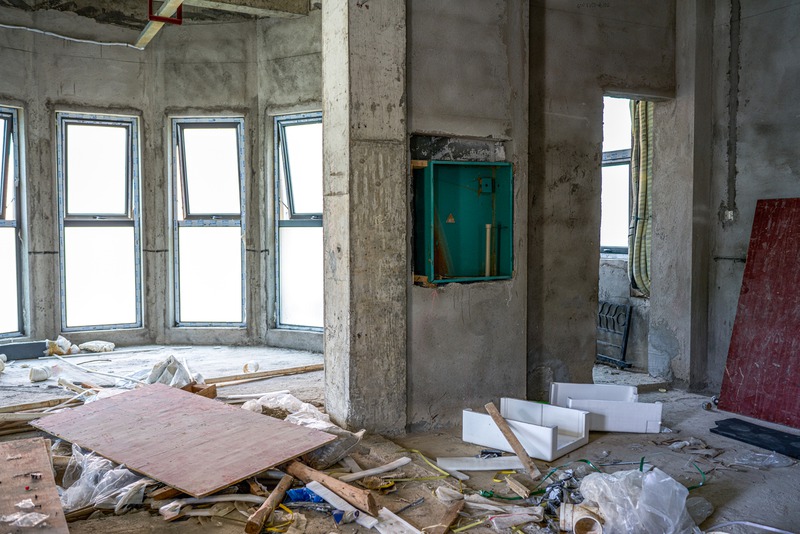When property restoration becomes necessary, whether due to water damage, fire, or another unfortunate event, it’s natural to feel overwhelmed by the process. One of the biggest concerns during these times is handling personal belongings. These items often carry emotional and financial value, and ensuring they are safeguarded is critical. In this article, we’ll explore strategies for managing your possessions during property restoration, offering tips to alleviate stress and ensure your cherished items remain intact.
Steps to Handle Personal Belongings
Addressing your personal belongings during restoration involves a few key steps. Being organized and proactive can help make this process smoother and more effective.
-
Assess the Damage: Before moving anything, it’s important to evaluate which items are salvageable and which are not.
-
Document Everything: Take photos or videos of your belongings, particularly those with damage, for insurance purposes.
-
Create an Inventory: A comprehensive list of items will not only guide the restoration process but also help with any insurance claims.
-
Sort and Categorize: Decide which items need immediate attention, which can be stored, and which require professional cleaning or restoration.
-
Prioritize Sentimental Items: Make sure to prioritize items with sentimental value, as these are often irreplaceable.
Hiring Professionals for Help
Professional restoration services can be crucial during this process. They not only have the expertise to assess damage but also the equipment for safe item recovery. It’s wise to consult with restoration contractors Houston, as they are familiar with local conditions and regulations. They provide an extensive evaluation and outline a detailed action plan.
Professionals can also help with specialized cleaning, ensuring items like electronics, documents, and valuable antiques are treated appropriately. Engaging experts can greatly enhance the chances of saving more of your belongings and getting your life back to normal sooner.
Organizing Items for Storage
Once you’ve assessed what can be salvaged, arrange for storage. Consider soft pack-out or offsite storage options. Local facilities often provide humidity-controlled environments that are ideal for particular items. Choosing the right storage minimizes risk and keeps items in good condition.
-
Climate-controlled Storage: Essential for items sensitive to temperature or humidity changes.
-
Security Features: Storage facilities should have robust security to protect your possessions.
-
Accessibility: Ensure you have easy access to your belongings when needed.
-
Size and Capacity: Evaluate the size of storage units based on your inventory.
Cleaning and Restoration Techniques
Personal items require different cleaning and restoration techniques based on the damage. Ongoing communication with professionals helps ensure these techniques are applied effectively.
For textiles, laundering or dry cleaning could suffice, but for more severe cases, ozone treatments or professional restoration might be necessary. Metal objects might need polishing, while wood items could require sanding and resealing. Professional help can determine the best methods.
Ensuring Long-term Conservation
Beyond immediate restoration, think about long-term conservation. This involves reevaluating storage methods, possibly using acid-free boxes for documents, or UV-protective coverings on photos and paintings. Proper care reduces the risk of future damage and maintains the integrity of your items.
Consider creating a dedicated space at home where these items can be stored under the right conditions. This is especially beneficial for valuable or sentimental pieces.
Throughout the restoration journey, it’s natural to feel a mix of emotions regarding your personal belongings. Collaborating with professional restoration contractors can offer peace of mind and ensure this challenging task is handled with expertise. If you’re unsure where to start, you might want to search online for “restoration contractors near me” to find professionals who can help you protect and preserve your cherished items.
Restoration Timelines
It’s helpful to gain an understanding of typical restoration timelines to set your expectations. Each situation is unique, so it’s essential to have regular updates from any professionals you engage.
Timelines can depend on factors such as the extent of the damage, the type of materials needing restoration, and the availability of services at the time of the disaster. Professionals will often provide a tentative schedule but remain flexible as new issues arise or conditions change.
Insurance Claims and Documentation
Documentation plays a pivotal role in ensuring successful insurance claims. Make sure all your documentation is thorough and kept in a safe location, preferably digitally, for easy access. Regular communication with your insurance company is vital. Sending updates along with photographic evidence reinforces the legitimacy of your claim.
Be prepared for site visits from assessors or restoration professionals as part of the process. By systematically following these steps, you can better manage your personal belongings during property restoration projects, reducing stress and improving your overall experience.
Final Thoughts
Managing personal belongings during property restoration is a complex but manageable task. Following organized steps and enlisting professional help can make the process more efficient and less emotionally taxing. By adequately documenting, storing, and cleaning your items, you enhance the chances of preserving your valued possessions. Remember, professionals are ready to assist, ensuring you navigate this challenging time with ease. With the right approach, you can focus on what truly matters — moving forward and restoring normalcy in your life.



